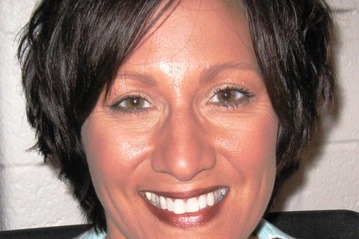Who knew there was far more to underground dance parties than blinding lights, relentless music and remembering to stay adequately hydrated?
It turns out that Tammy L. Anderson, associate professor of sociology and criminal justice at the University of Delaware, knows a great deal about the phenomenon that exploded in the early 1990s and whose influence is felt to this day.
The openly gay sociologist, who just released her book, “Rave Culture: The Alteration and Decline of a Philadelphia Music Scene,” fell in love with electronic and dance music after she relocated from Chicago to work at the university in 2000.
“My new office came with a computer with Napster, which at that time was all the rage,” she said. “I discovered remix work there. I love it because it was upbeat, it was happy and it gave me energy. I started downloading stuff like crazy. From there I learned that a lot of other people were into this. As somebody who was trained in classical music, I really related immensely to this seamless fusion of tracks that the dance DJs would put together. The more I listened to it, the more I wanted music without lyrics, since a lot of the lyrics on commercial radio were heterosexist and misogynistic. That’s a common story that I’ve found with people.”
“Rave Culture” contains many stories, as Anderson dug deep into the local and national dance-music scene and explored the music, drug use and social dynamics (and deviance) that are part of the movement’s ever-evolving social structure.
Getting the book together took Anderson a number of years, as well as considerable sore feet and frequent-flier miles.
“It took a long time,” she said. “That kind of work takes quite a bit of time. I started investigating the scene in 2003 and I spent a lot of time in Philadelphia. I did comparative work in London and Ibiza in 2004 and 2005 for the book. I wrapped up data collection in early 2007. I would say I spent four years in the field, and then I started writing the book.”
Over the years, through research and first-hand experiences, Anderson chronicled how newer generations, commercialization, police involvement and genre fragmentation fundamentally altered electronic dance music. Specifically, Anderson calls attention to issues of personal and collective identity, which was and still is marked by the decline of the rave scene, and the culture as a whole being less inclusive.
“I think it’s less accommodating today,” she said about the shrinking presence of LGBT artists and fans. “Part of its ethos, the belief system, in the U.S. was peace, love, unity and respect. People told me that published archival literature suggested that people could go out and express their sexuality and Ecstasy facilitated different sexual expressions. You could see and hear people talking about the bonding that was going on, not only by sexual orientation but race. But what you see over time is that, as rave transformed to commercial culture in nightclubs, it adopted hetero activity standards: The highly sexualized female used to advertise, events are about hooking up and sexual conquests. For that reason, there is not a purposeful exclusion of LGBT folk: It’s just that the vibe around the events is more heterosexually oriented. Diversity in general has been a value that has sort of been lost.”
But Anderson did find that being an openly gay woman in that environment cut through some of the sexism on the scene.
“The scene is so heavily male-biased and they’re still predominantly white,” she said. “It’s a scene that hasn’t seen sex and race equality as much as some other industries we have. By being gay and out, I was able to redefine the dynamics of a male DJ talking to me and erase the sexual dynamic that can accompany male/female interactions in this traditional sexist framework. Male DJs believe that female DJs get gigs because they’re hot, not because they’re talented. But by being gay, that helped me remove that dynamic and have a better rapport.”
On top of the social issues that Anderson explores in “Rave Culture,” she also explains how the grassroots and often-underground scene that was once thought of as being a loosely organized and lawless gathering of hedonism and drug use has gone on to have a major impact on the mainstream dance-club scene.
“Being the sociologist that I am, I was curious about the culture and the collective identity that went along with this music,” she said. “Rave has evolved in the commercialized EDM culture. I wouldn’t call it a fad. It’s the same trajectory between rave culture and some other music scenes like punk and hardcore.”
“Rave Culture: The Alteration and Decline of a Philadelphia Music Scene” is available now. For more information, visit www.temple.edu/tempress or www.udel.edu/soc/tammya.
Larry Nichols can be reached at [email protected].
